- About MAA
- Membership
- MAA Publications
- Periodicals
- Blogs
- MAA Book Series
- MAA Press (an imprint of the AMS)
- MAA Notes
- MAA Reviews
- Mathematical Communication
- Information for Libraries
- Author Resources
- Advertise with MAA
- Meetings
- Competitions
- Programs
- Communities
- MAA Sections
- SIGMAA
- MAA Connect
- Students
- MAA Awards
- Awards Booklets
- Writing Awards
- Teaching Awards
- Service Awards
- Research Awards
- Lecture Awards
- Putnam Competition Individual and Team Winners
- D. E. Shaw Group AMC 8 Awards & Certificates
- Maryam Mirzakhani AMC 10 A Awards & Certificates
- Two Sigma AMC 10 B Awards & Certificates
- Jane Street AMC 12 A Awards & Certificates
- Akamai AMC 12 B Awards & Certificates
- High School Teachers
- News
You are here
Mathematical Treasures - Robert Recorde's Whetstone of Witte
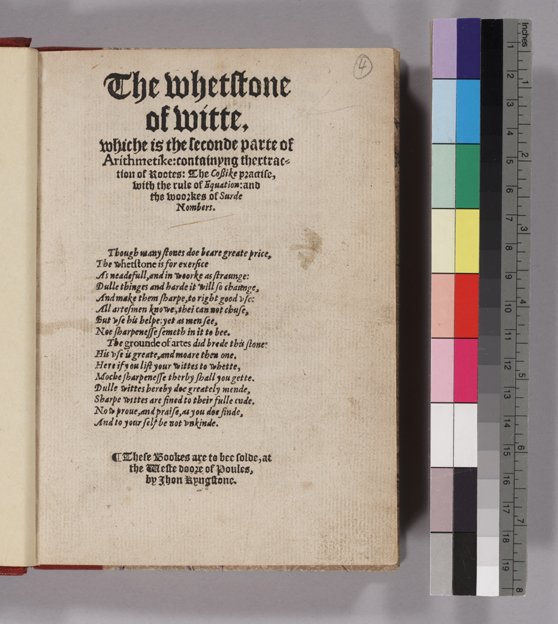
This is the title page of the Whetstone of Witte (1557) by Robert Recorde (1510-1558). Recorde explains in this poem the reason for the name of what is essentially an algebra text, one of the earliest in England.
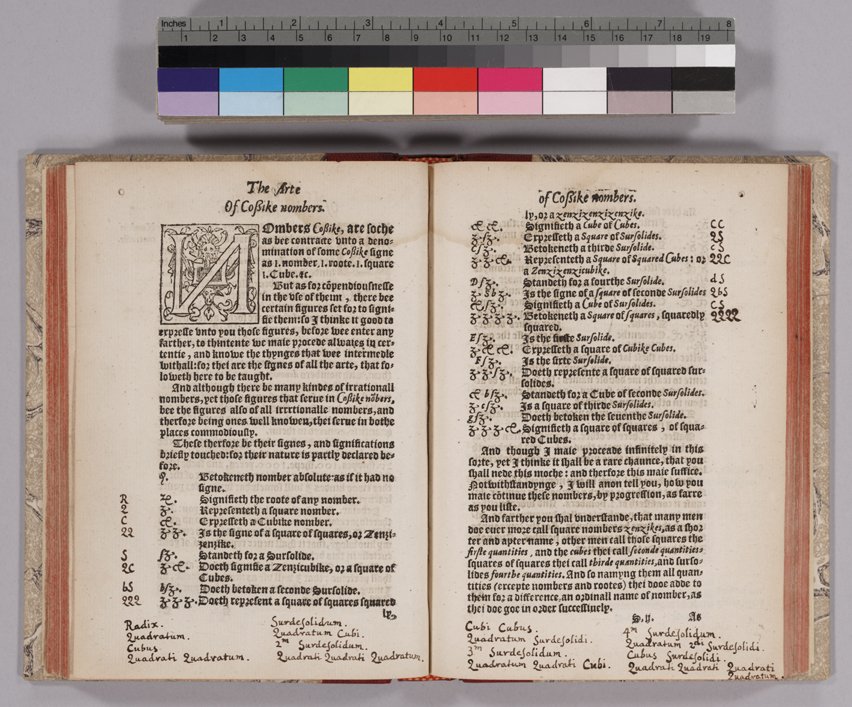
On this page (Sig. S, f. i v & f. 2 r), Recorde explains the notation for a unknown and its various powers. Note that the owner of this particular copy wrote notes to help him understand the various names and abbreviations for the powers.

Recorde explains subtraction of polynomials by use of a poem (Sig. X, f. ii r).
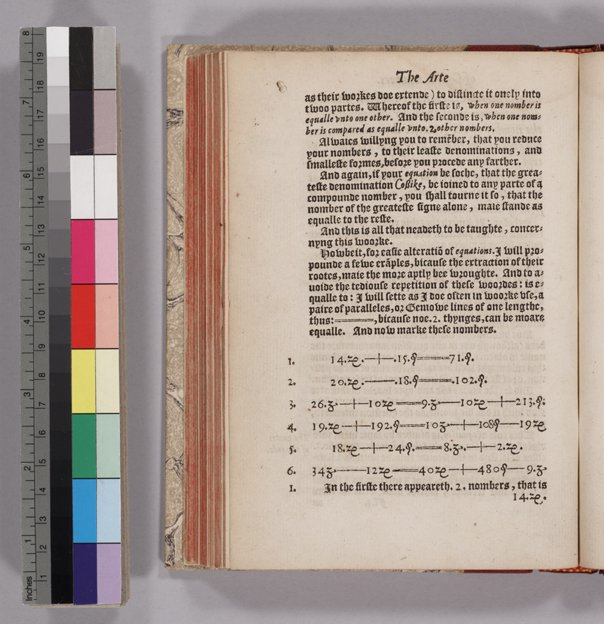
On this page (Sig. Ff, f. i r), we see Recorde introducing, for the first time, the "equal" sign. He explains that he picked two parallel lines to represent this concept "because no two things can be more equal." He then gives various examples of the use of the equal sign in algebraic equations.
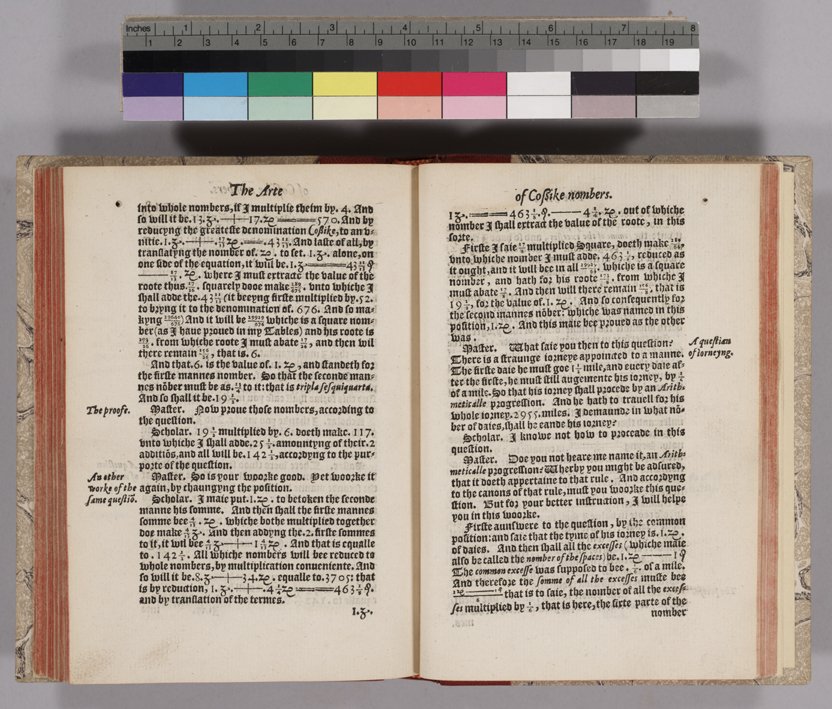
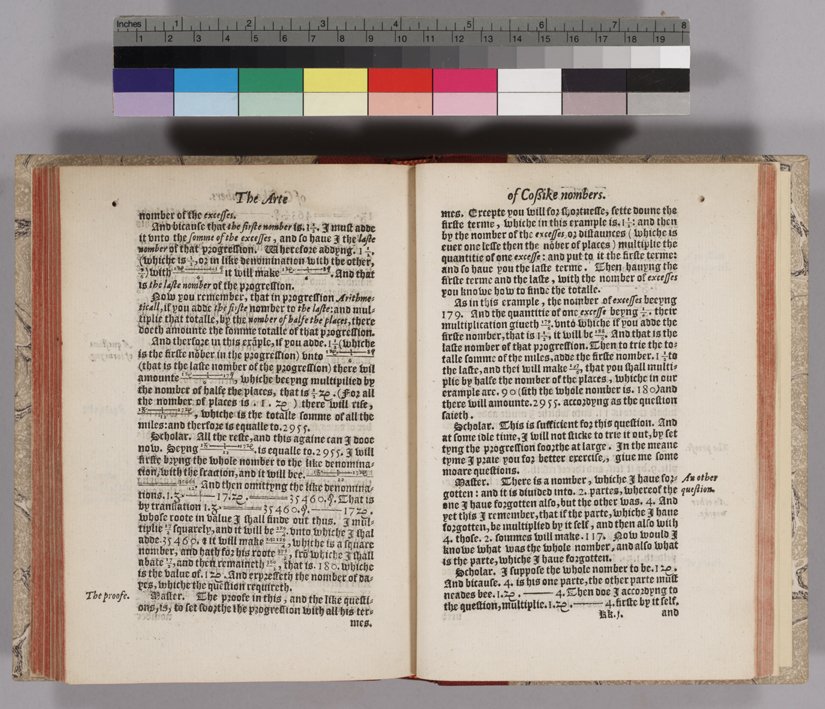
On these pages (Sig. Ii, f. iv r & v and Sig. Kk, f. i r) is Recorde's attempt to design a real problem whose solution requires a quadratic equation. This problem is entitled a "question of jorneying" and requires knowledge of the formula for the sum of an arithmetic progression.
Frank J. Swetz and Victor J. Katz, "Mathematical Treasures - Robert Recorde's Whetstone of Witte," Convergence (January 2011)




